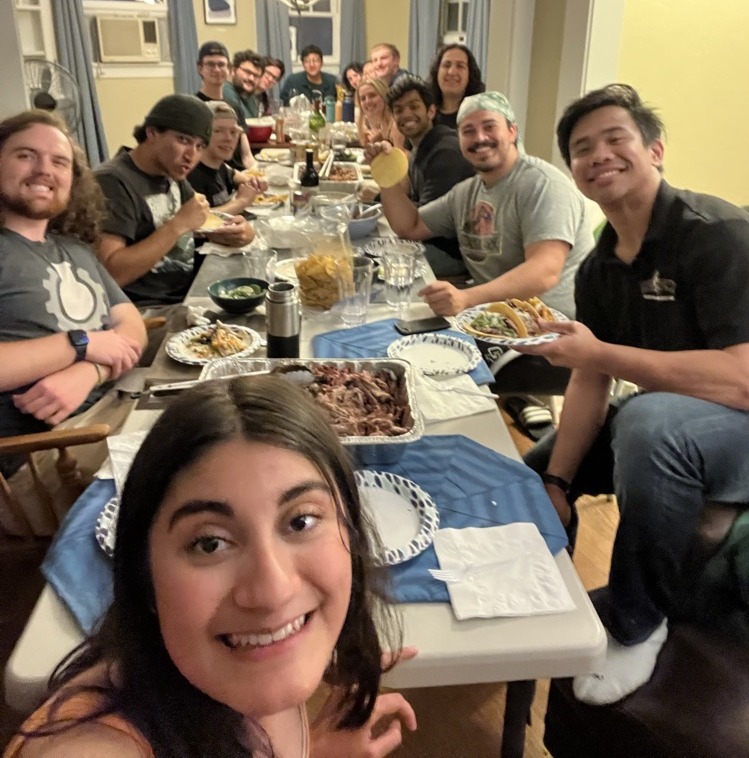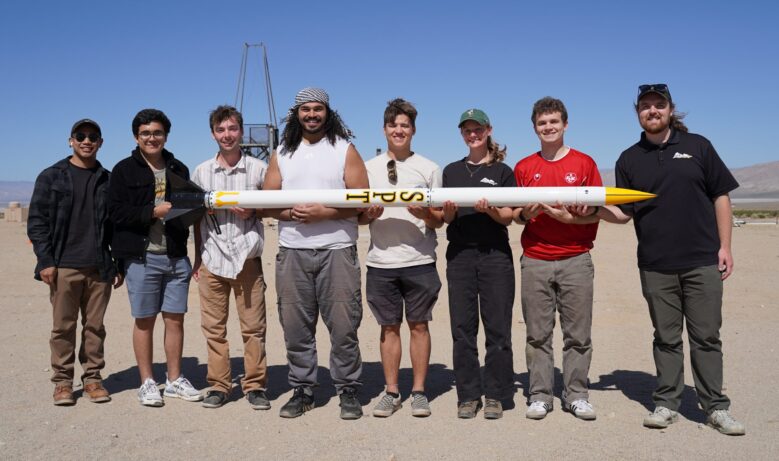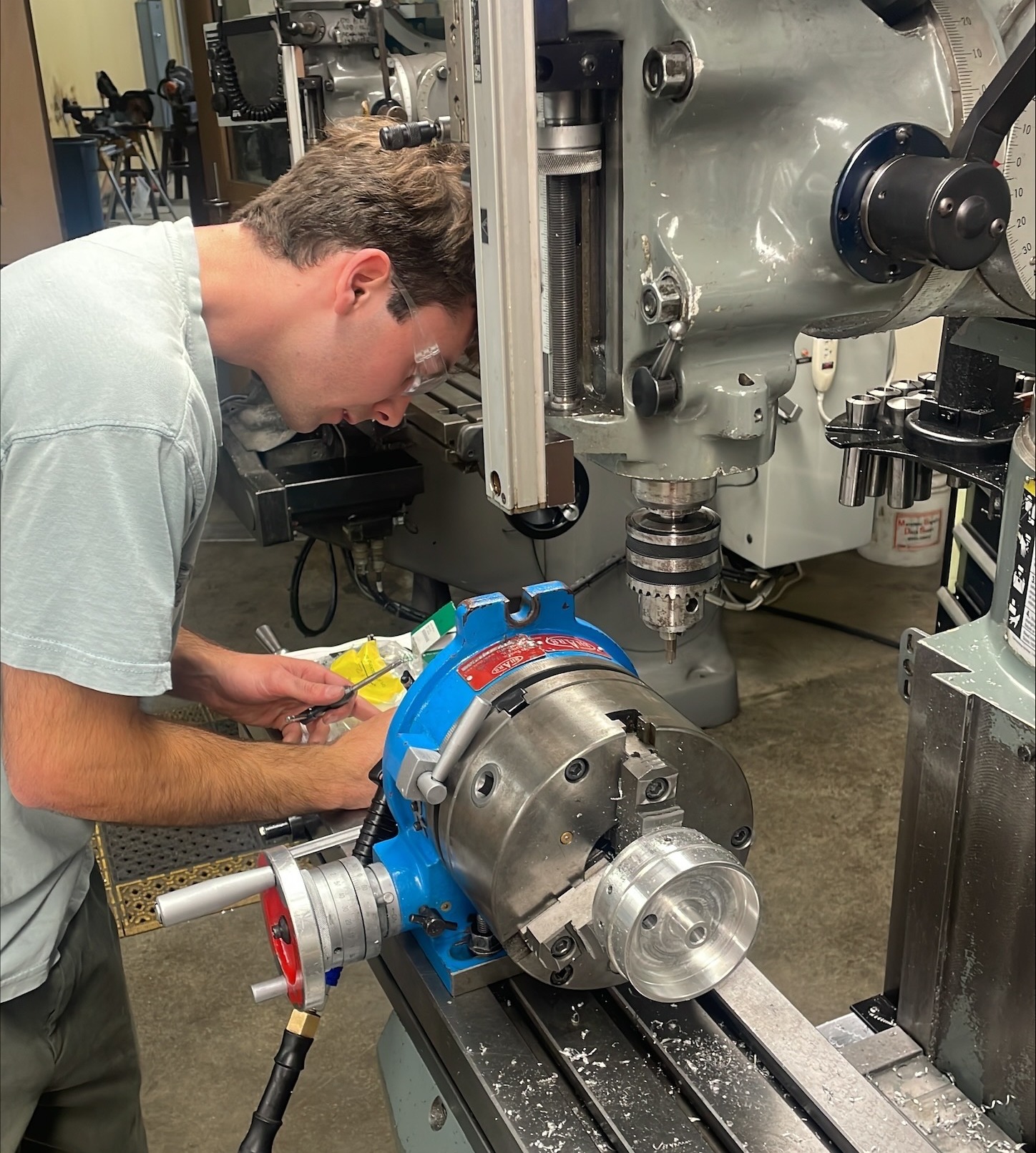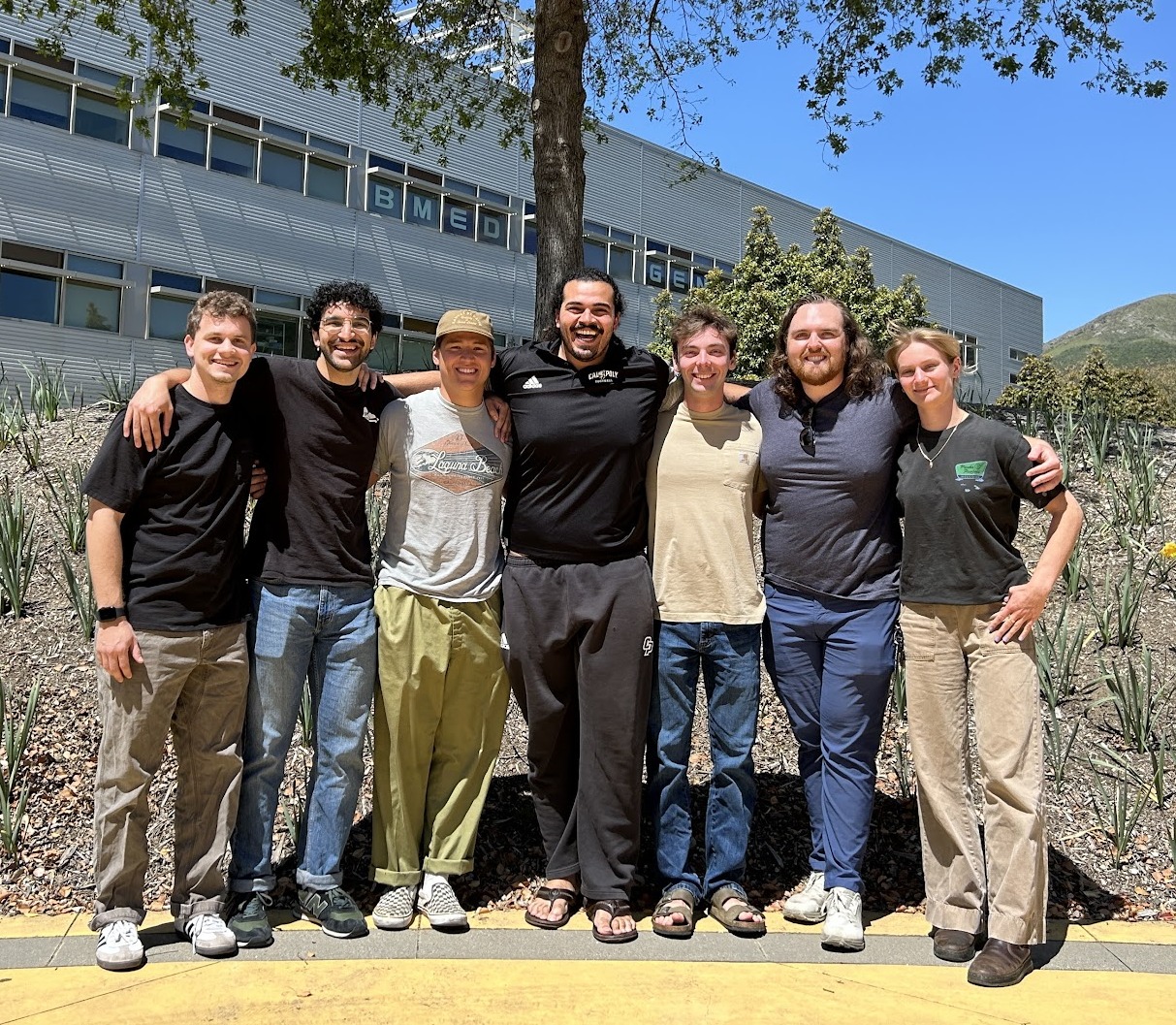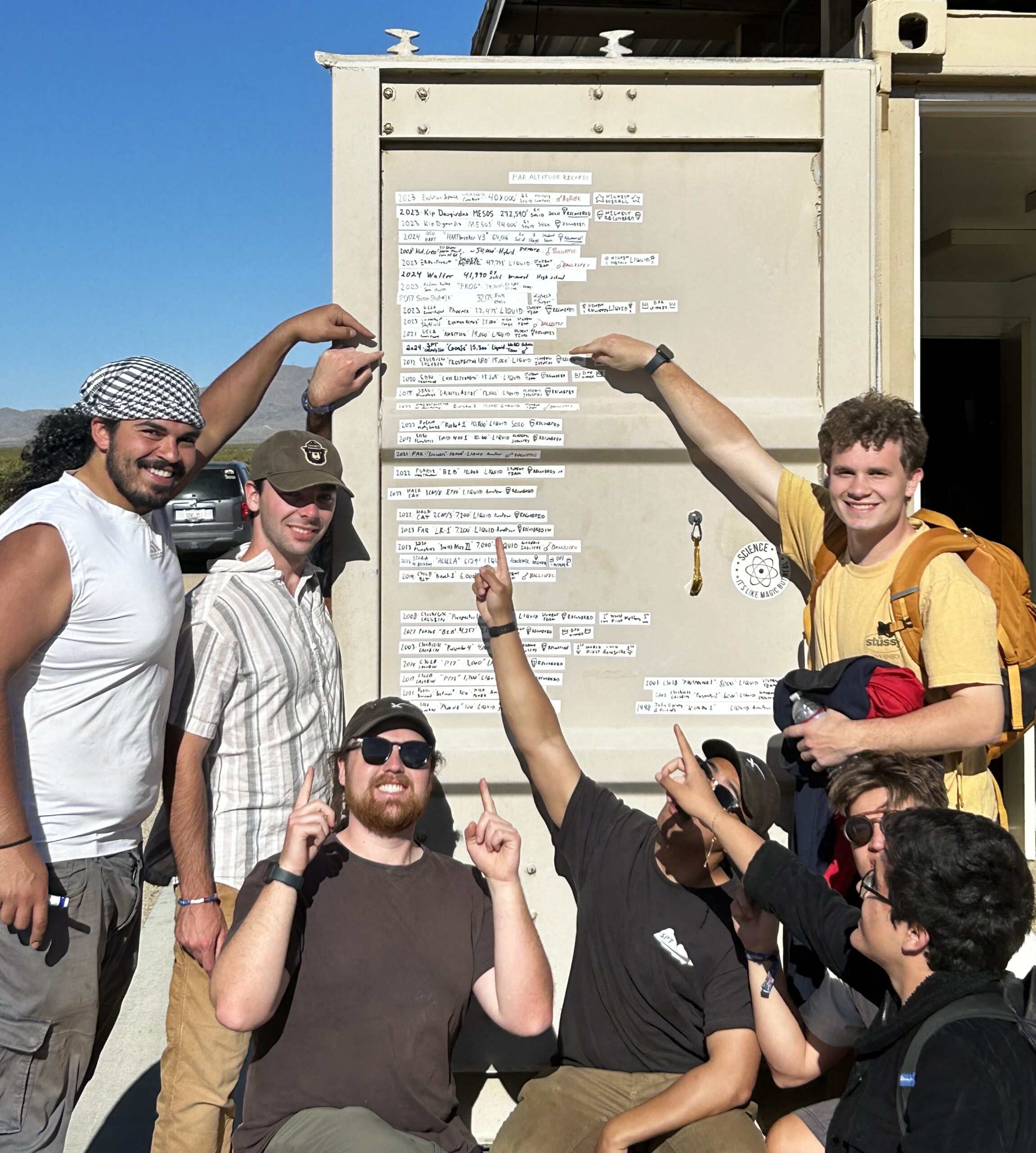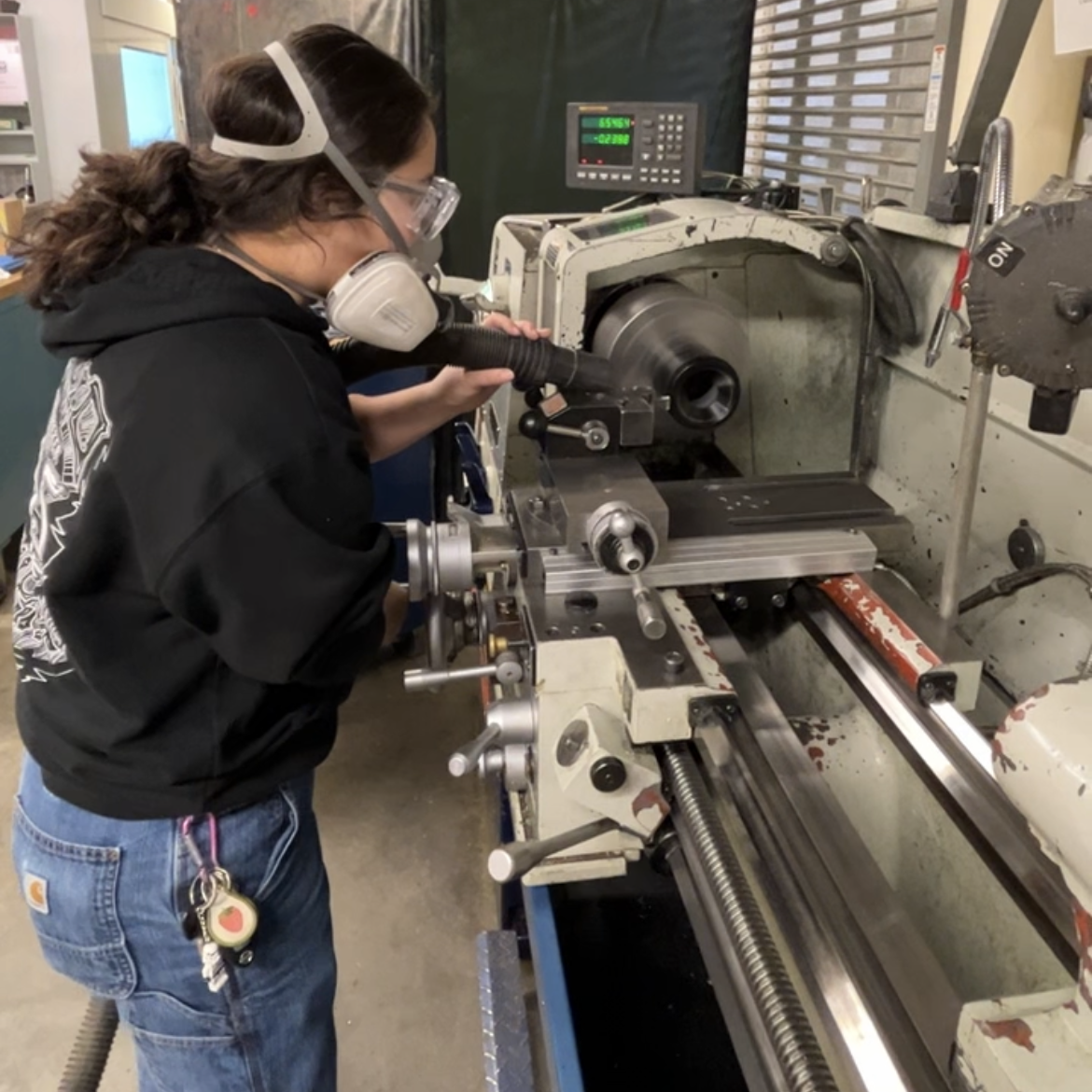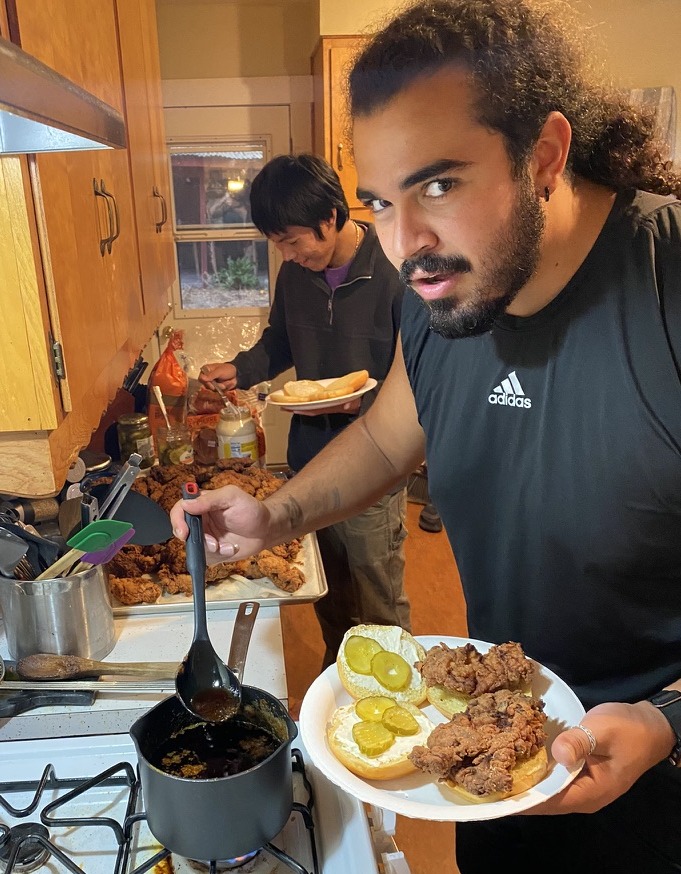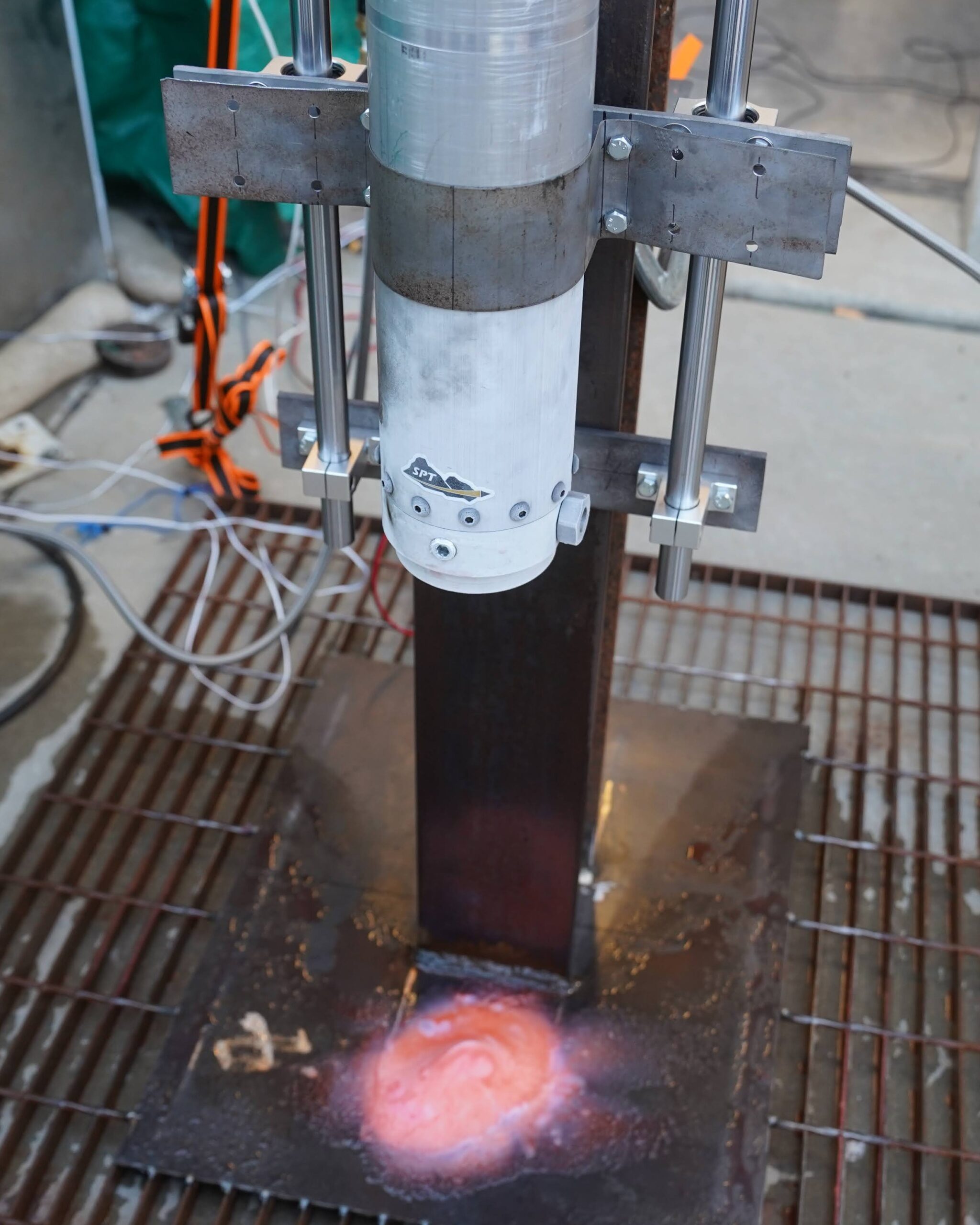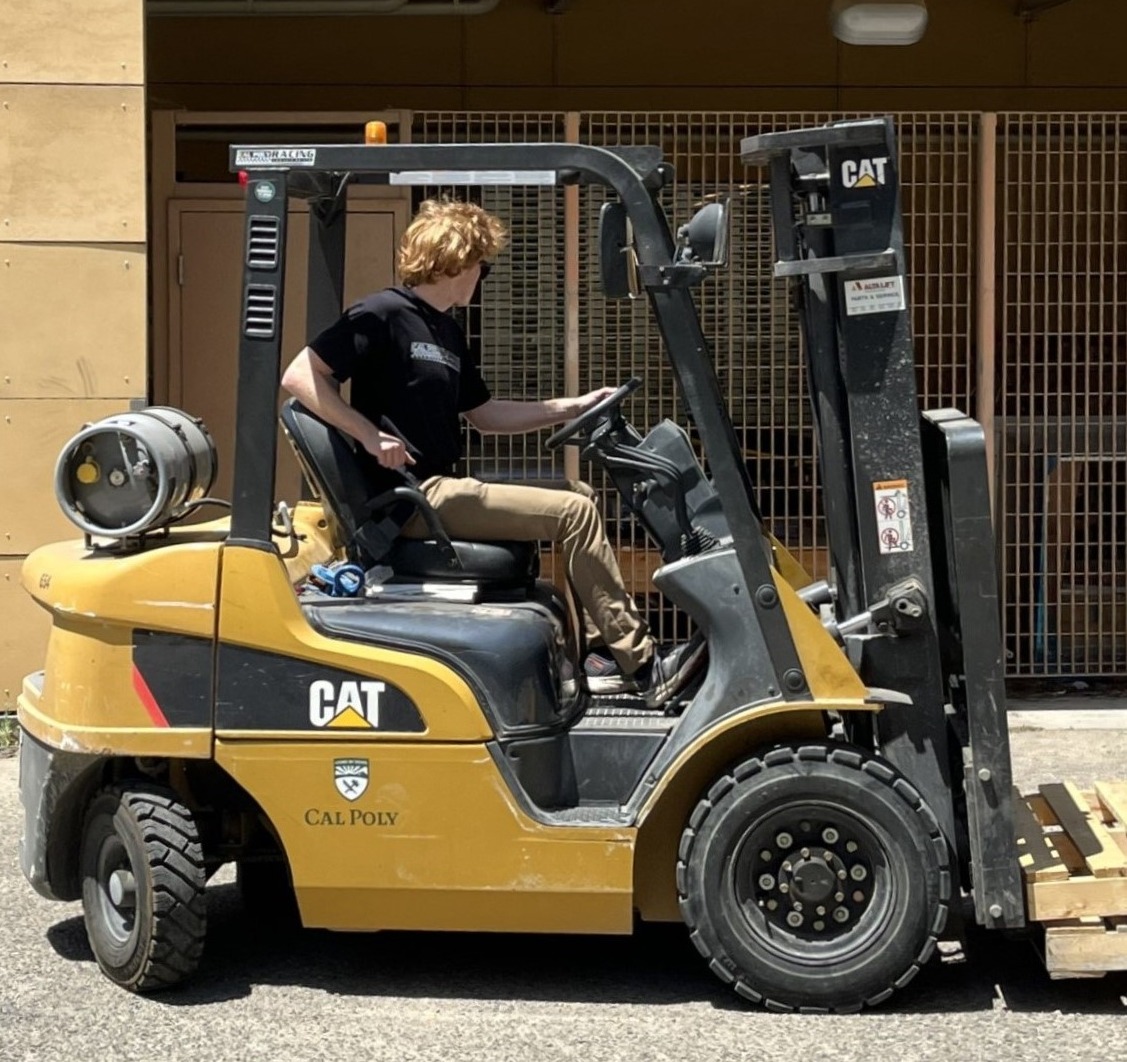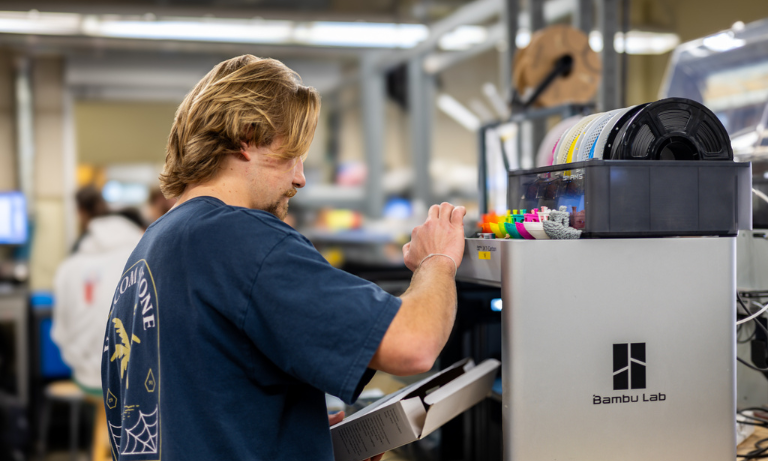Student Teams Achieve Milestones in Aerospace Technology and Gain Global Recognition
Just one year after its founding, SLO Propulsion Technologies is driving Cal Poly into a new era of aerospace innovation through small-scale propulsion projects, with two teams capturing international attention for their rocketry achievements.
The HOP team became the first collegiate group to complete a demanding throttle test in the Collegiate Propulsive Lander Challenge, earning a $15,000 prize with the potential for even greater rewards. Meanwhile, the Let it Loose team launched Cal Poly’s first liquid rocket, joining an elite group who have launched amateur rockets above 10,000 feet.
“We work fast, fail often and test relentlessly,” said SPT co-founder and mechanical engineering student Kyle Schumacher, highlighting the elevated Learn by Doing philosophy that has driven the IRA since its recognition in April 2023.
But beyond the countless hours of innovation and machining, another element fuels SPT’s success: the simple tradition of sharing Sunday dinners.

The Goose is Loose
Nothing unites people like food – a principle that SPT co-founder Adam Boegel instilled in the group.
After honing his culinary skills at a traditional French bakery in San Francisco, he began hosting Sunday dinners for his fellow club members that featured legendary dishes like brisket. These gatherings quickly became a cherished tradition, creating a sense of family among members.
“People work best when they feel connected,” said Boegel, a graduating aerospace engineering major from Walnut Creek who will leave his recipe book for SPT members to follow.
Around his dinner table, members shared their dreams for projects, including launching the school’s first-ever liquid rocket – a type of reusable rocket that uses liquid propellants, commonly used by leading aerospace companies like SpaceX.
The Let it Loose team solidified their plan over spring break after securing a launch date from Friends of Amateur Rocketry (FAR) to use their facility in the Mojave Desert.
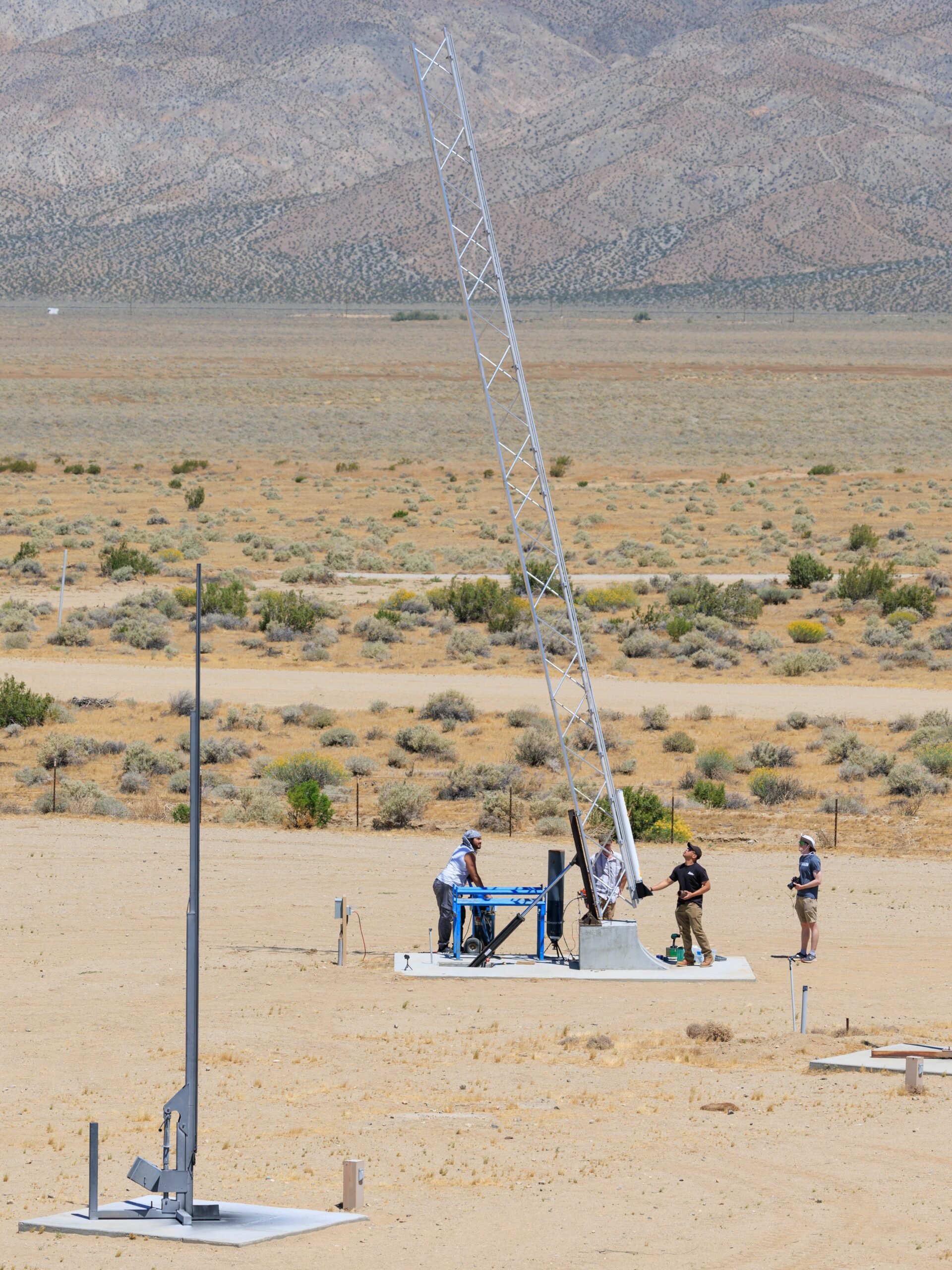
“We knew how to make things happen fast,” said Mo Wahdan, a graduating aerospace engineering major with triple citizenship in Egypt, Saudi Arabia and the United States.
And fast they would have to move with mere weeks before their launch window on May 25.
“Our philosophy was, ‘Get all your homework done Friday night. Work Saturday to Sunday night, then head to family dinner,’” said Wahdan, who became hooked on rockets after watching SPT hot-fire its first engine in May 2023.
Seven weeks and $2,200 later, the team of nine was on their way to the FAR facility – the exclusive site for launching amateur liquid rockets in the U.S. – with their rocket named Goose.
“We asked ourselves, ‘Is it good enough to give it a try? Yes. Is it safe? Yes. Then, it’s time to go,” Wahdan said with a grin.
Their true test came at 11:30 a.m., when their first attempt failed.
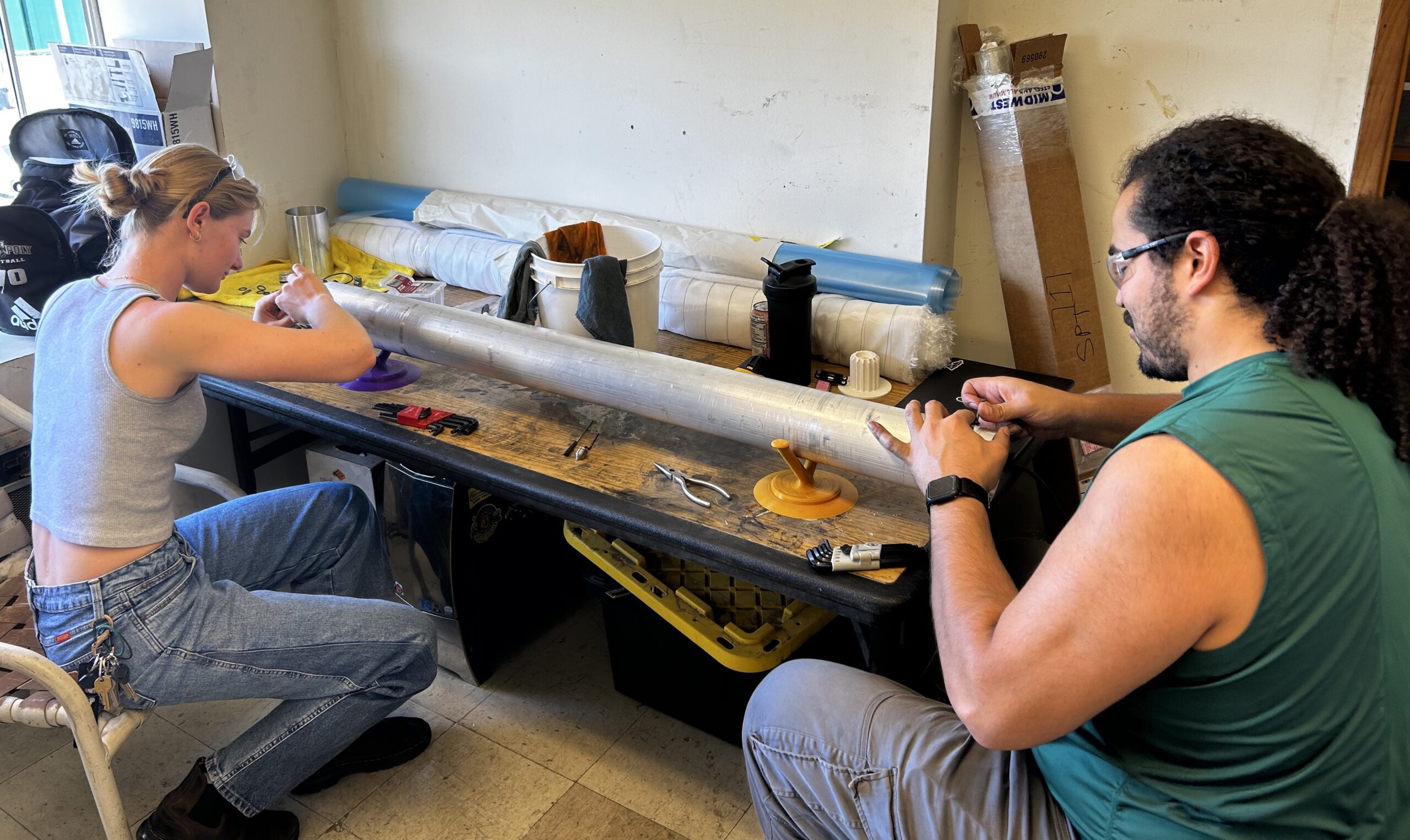
Wahdan, who had played as an offensive lineman for Cal Poly’s football team before diving into rocketry, had drilled the team like a coach, preparing them for any obstacle they could imagine. He watched as his teammates kept their cool, problem-solved and prepared for attempt No. 2.
“Those failure moments worked for us, and I’m glad we had them,” Wahdan said.
To the absolute delight of the team, the second attempt was a success.
Members rushed to the facility’s windows to catch a glimpse of the rocket’s rapid ascent from 0 to 100 mph in just 0.5 seconds. As Goose reached an altitude of 15,300 feet, traveling at Mach 1.1, emotions ranged from elation to relief.
They marked their altitude at the launch site and recovered the battered Goose, which will serve as a relic for future teams aiming to launch and land the next iteration.
At the family dinner the following night, they celebrated the project that marked the culmination of Wahdan and Boegel’s college careers. Both shared their commitment to rockets as a lifelong passion and their plans to inspire their future children to build their own.
“We have a lot of great science fairs ahead of us,” Boegel said, as Wahdan laughed in agreement.
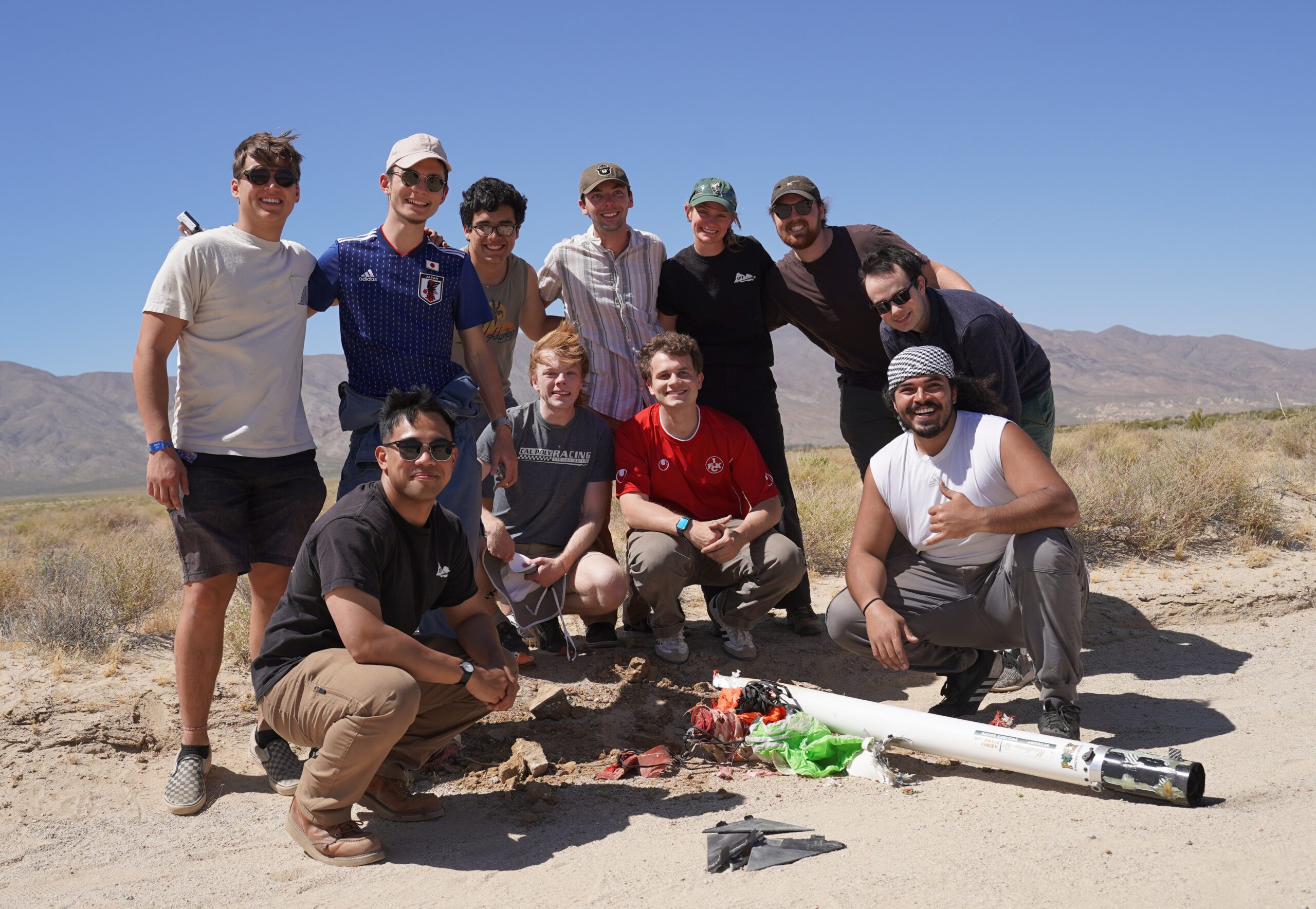
HOP Team Leaps Ahead
Another SPT team is on a bold mission: to become the first in the world to achieve all five milestones in the Collegiate Propulsive Lander Challenge.
This international competition offers awards ranging from $15,000 to $50,000 to motivate university teams to develop self-landing rockets, with tasks progressing from hot-fire tests to touchdown, tethered hover and finally, a hop – a short, low-altitude test flight.
Cal Poly’s six-member HOP team was the first to achieve two milestones in under a year, outpacing schools with more funding and established rocketry programs.
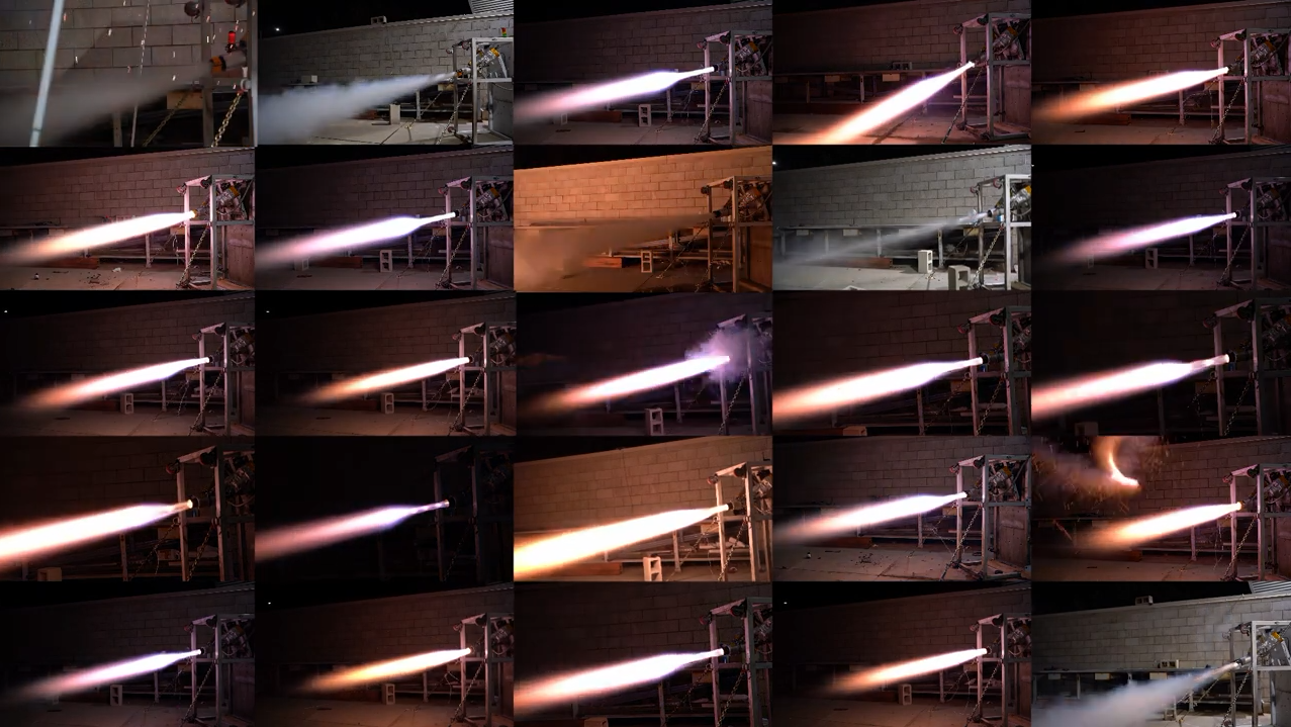
“We’ve adopted a fail-fast mentality, which allows us to improve quickly,” said Olivia Madrigal, a materials engineering major from Maryland, who is passionate about rapid, hands-on engineering.
While other university teams are still pursuing the thrust vector control milestone, which involves hot-firing a propulsion device with over 500 pounds of thrust for at least 10 seconds, HOP was the second team to achieve it. Months later, they became the first to maintain controlled thrust above 500 lbf for 4 seconds, throttle down to 40% for 2 seconds and then return to full thrust during hot-fire.
“We are definitely in the lead,” said Schumacher, a mechanical engineering major from San Jose who has big dreams to become an astronaut.
With an accumulated $30,000 in prize money, they will build their vehicle for the next test: touchdown.
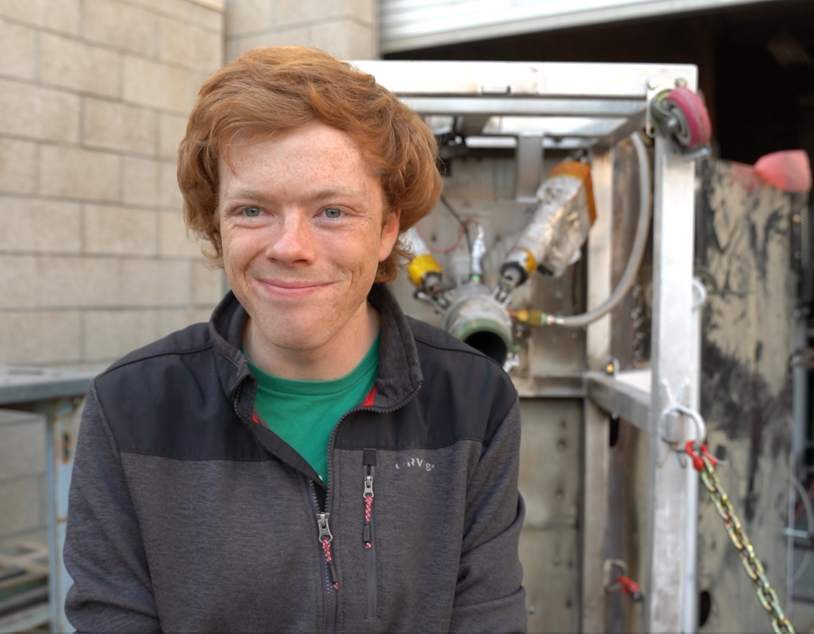
“It takes a certain amount of insanity to take on a project this big, but I am generally optimistic,” said Schumacher, before proclaiming, “This team will complete the challenge.”
They just might do it, given their devotion to the cause.
“We spend as many hours a day on the project as we can without failing our classes,” said Wendy Dong, a mechanical engineering major from Yorba Linda, estimating the hours they put in are equivalent to a full-time job.
The machine shops, where they all work as student techs, and the Propulsion Lab have become their homes away from home as they follow a rigorous testing regimen, intent on improving with each iteration.
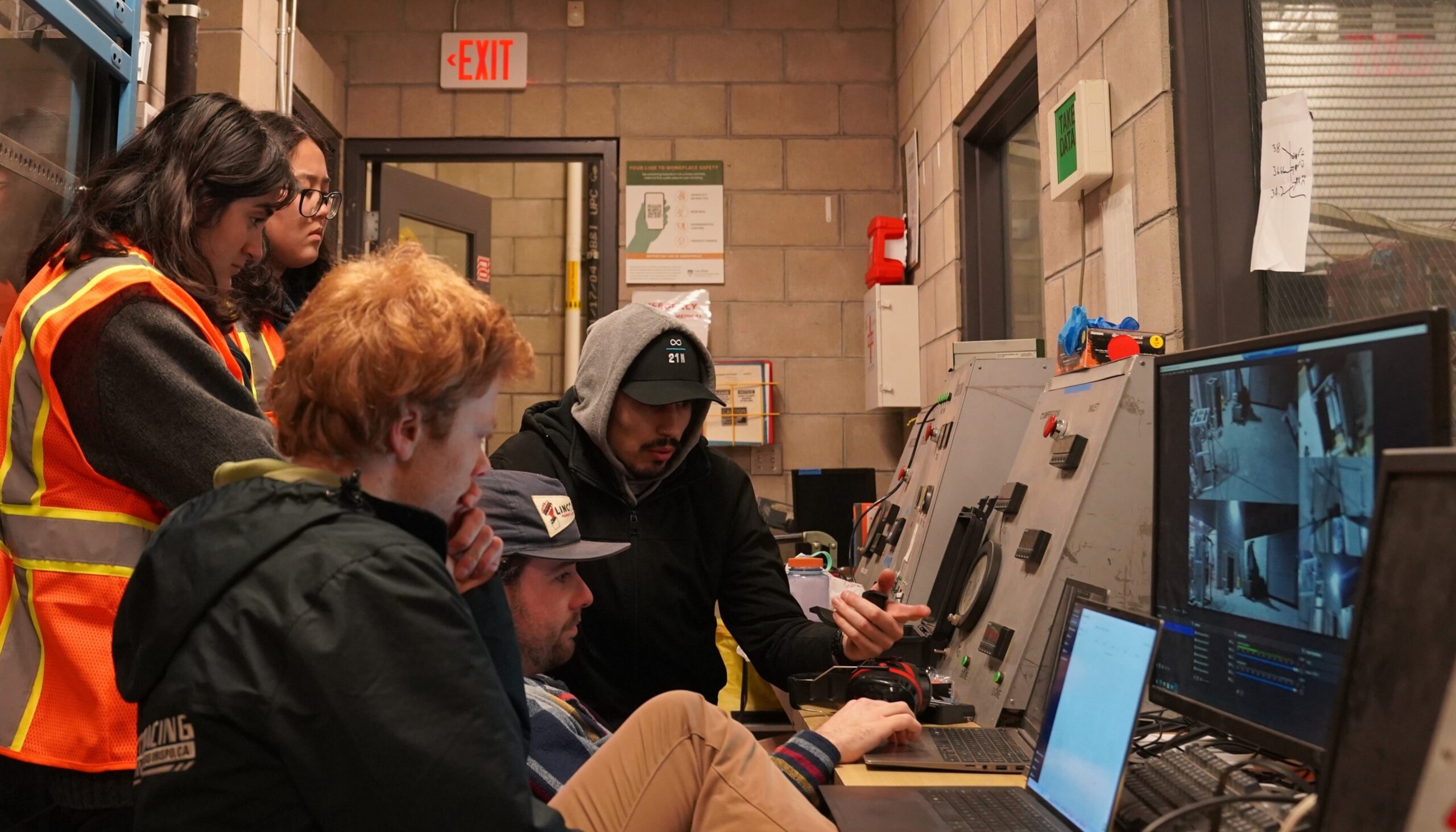
The entire team will return in the fall, eager to tackle the remaining three milestones. The final task, worth $50,000, is a hop where they must ascend the vehicle with a payload to 50 meters above ground level and then land successfully within a designated circle.
“We are all deeply committed to this challenge,” said Madrigal, noting their willingness to fail repeatedly has been a major factor in the team’s success.
That, along with Sunday dinners, of course.
Watch SPT members hot-fire their engine and launch their rocket, Goose, by visiting their YouTube page here.
By Emily Slater
